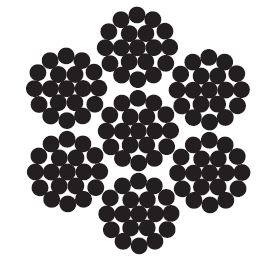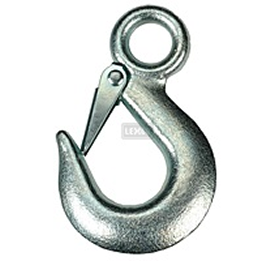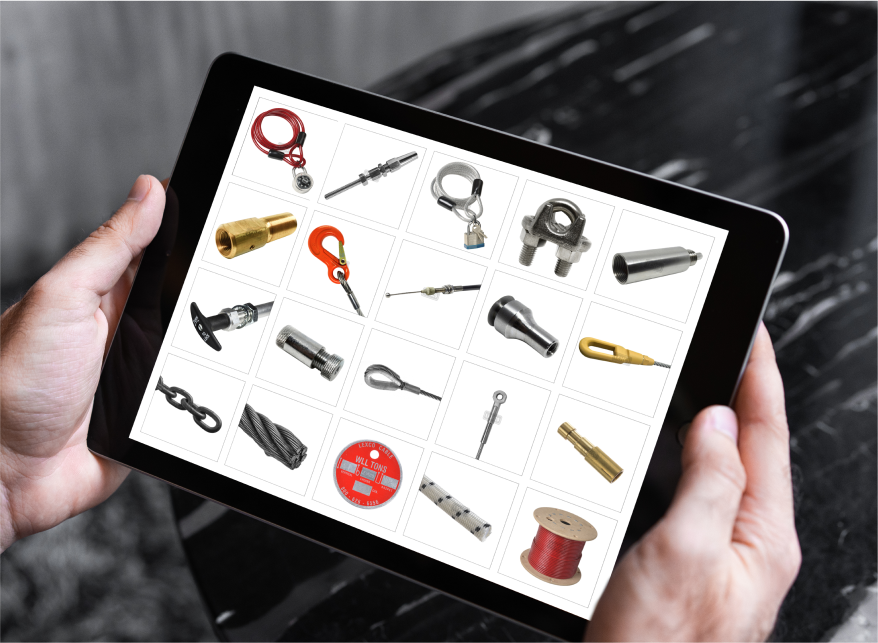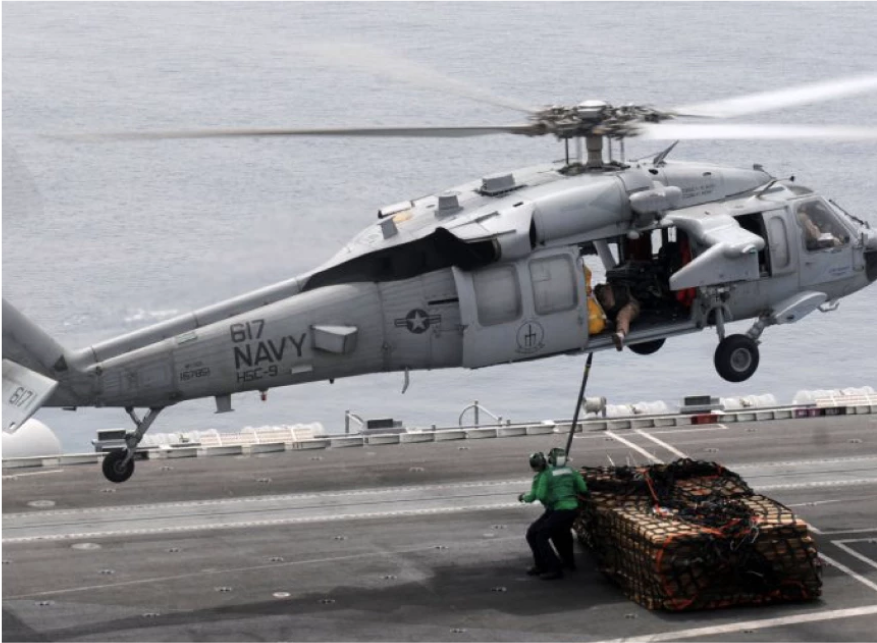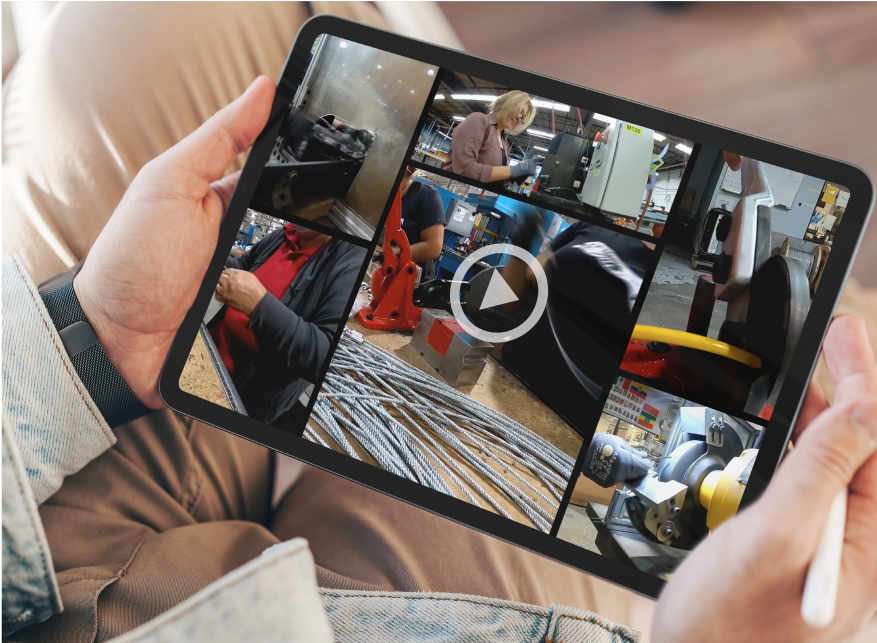Understanding Wire Rope Assemblies for Towing
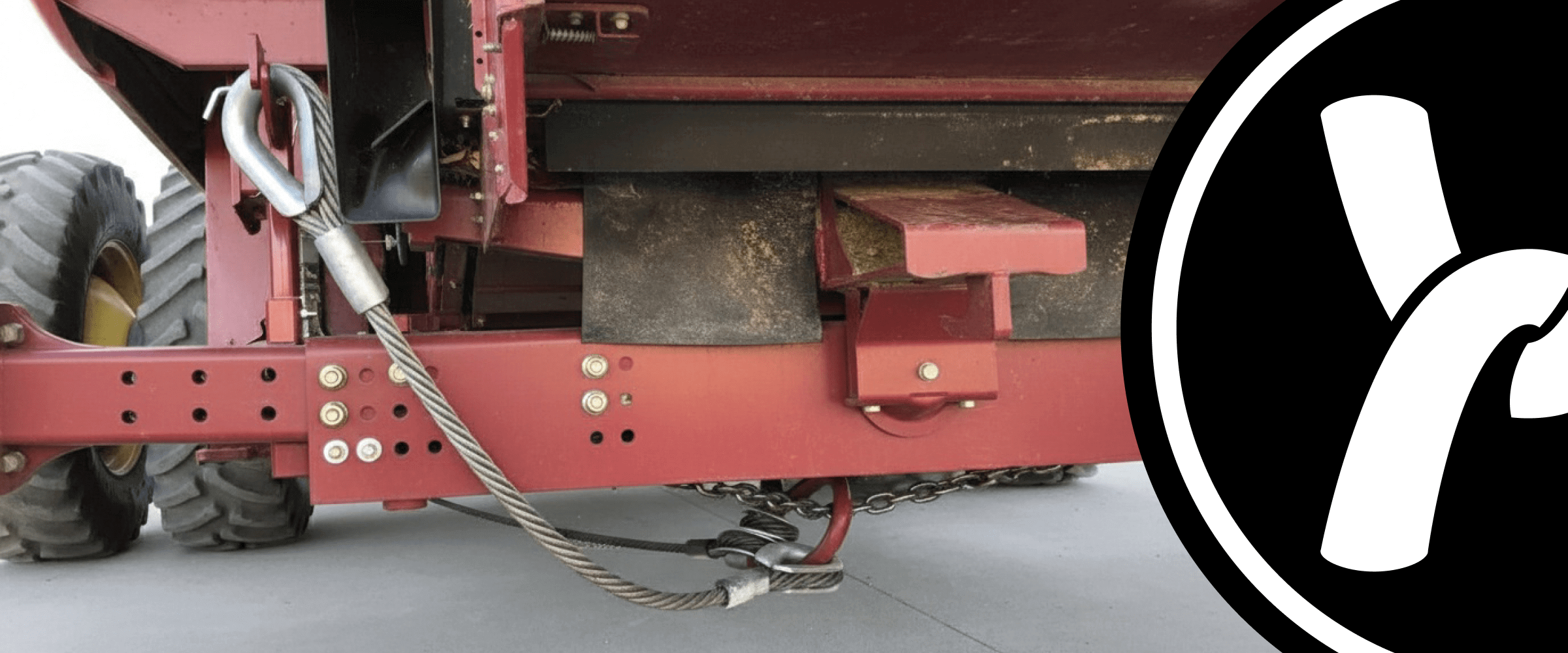
Understanding Wire Rope Assemblies for Towing
Wire ropes are the ideal tools for towing, winching, and pulling applications. They are strong, durable, versatile, and well-suited for a variety of jobs such as towing heavy equipment, tanks, trucks, trailers, and cars. Wire rope manufacturers can tailor assemblies to almost any application, environment, or circumstance. This article will cover:
Components of Tow Cable Assemblies
Tow cable assemblies can be broken down into 2 key components:
Wire Rope for Towing
- 7×19 Construction (7 Strands; 19 Wires Per Strand) for Towing Applications
7×19 is an ‘aircraft cable’ available through 3/8″ diameter. Galvanized 7×19 aircraft cable is stronger than stainless steel aircraft cable. This stranding construction is well-suited for towing applications where the cable must be flexible, capable of wrapping around winches, and bent frequently.
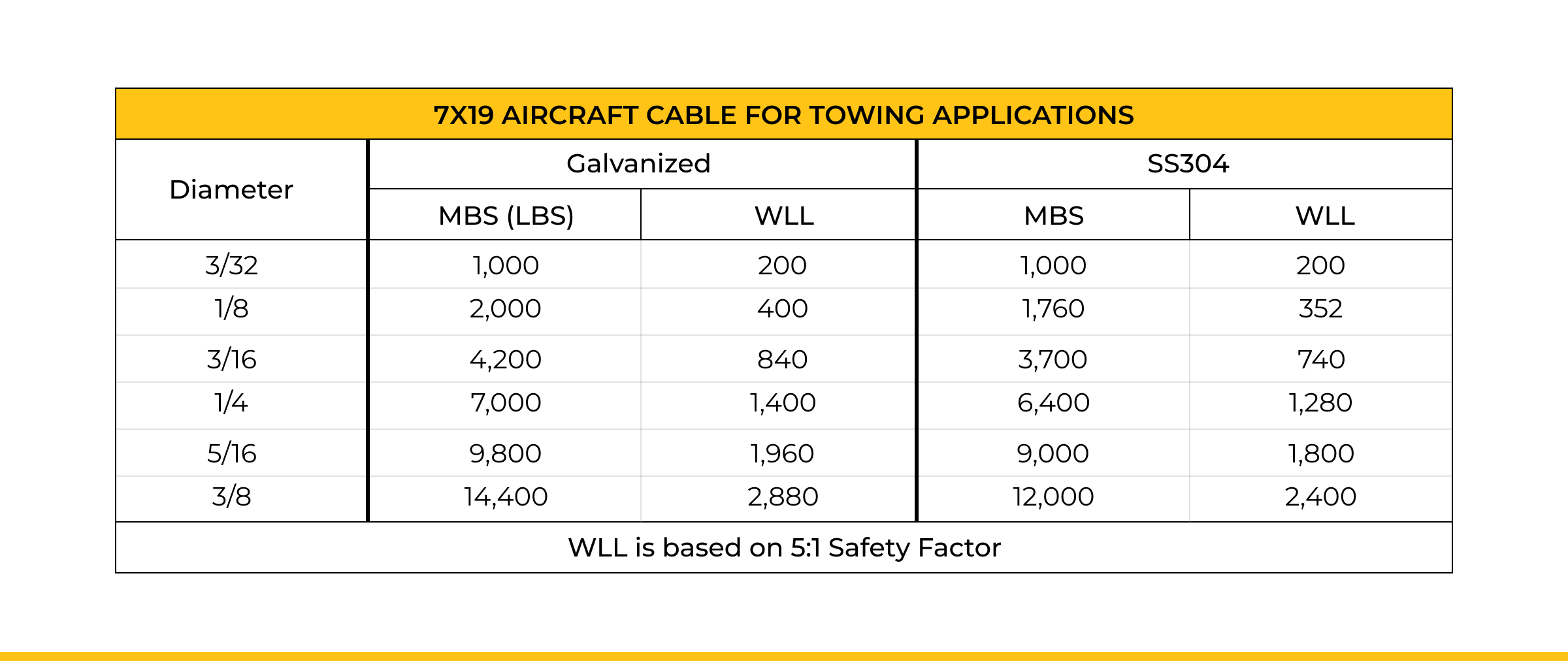
- 6×19 Class IWRC Wire Rope for Towing Applications
Built with an Independent Wire Rope Core (IWRC), this construction balances strength and abrasion resistance. It is commonly chosen for towing in rugged environments where the cable may come into contact with metal edges or rough surfaces. This design offers durability without sacrificing too much flexibility, making it a versatile choice for towing needs. Bright or galvanized are suitable for towing purposes.
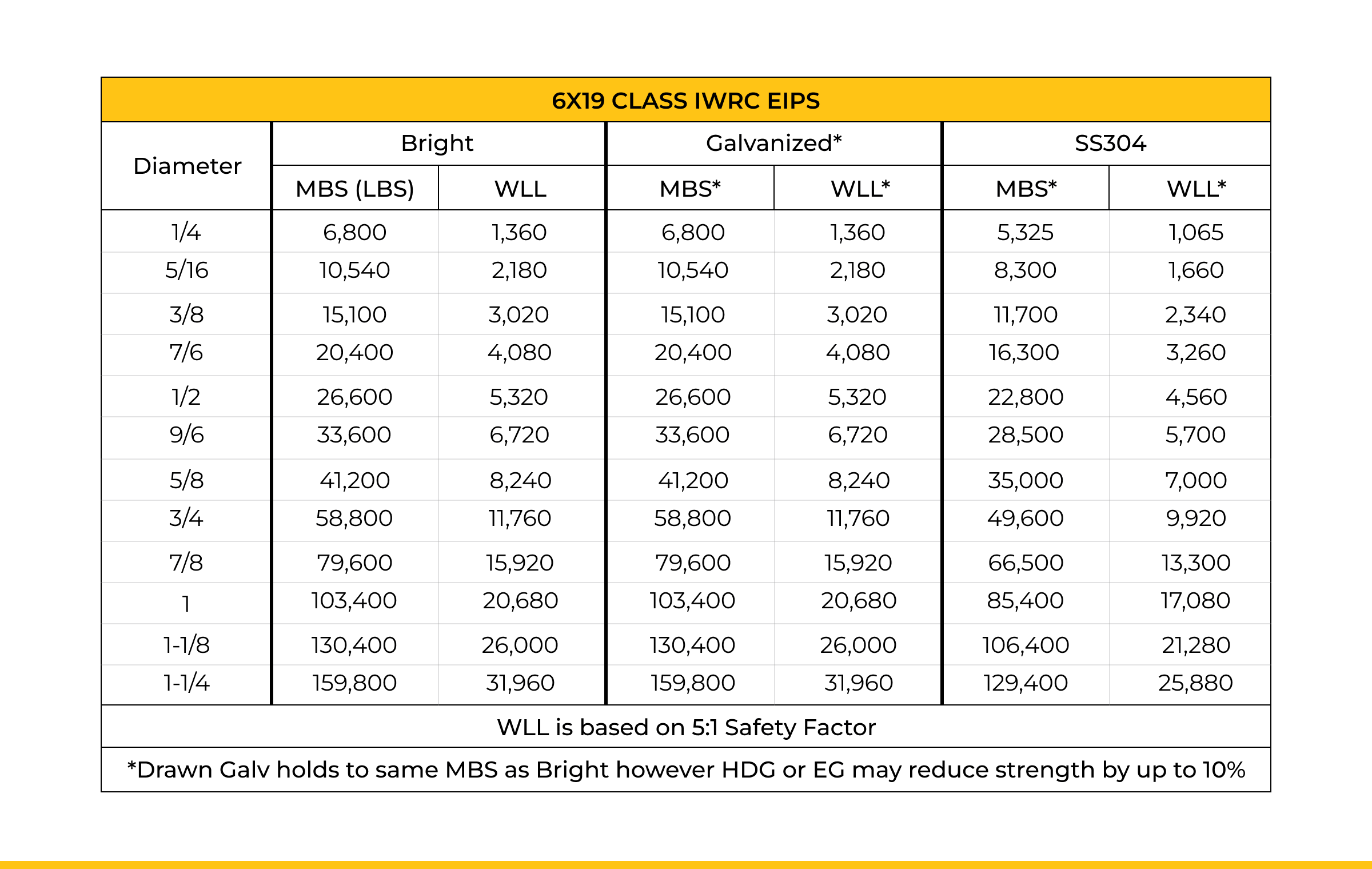
- 6×37 Class IWRC Wire Rope for Towing Applications
Featuring an IWRC, this construction prioritizes flexibility and bending fatigue resistance, making it ideal for heavy loads that require frequent movement or directional changes. It performs well in high-capacity towing scenarios where flexibility is critical to prevent premature failure. Bright or galvanized are suitable for towing purposes.
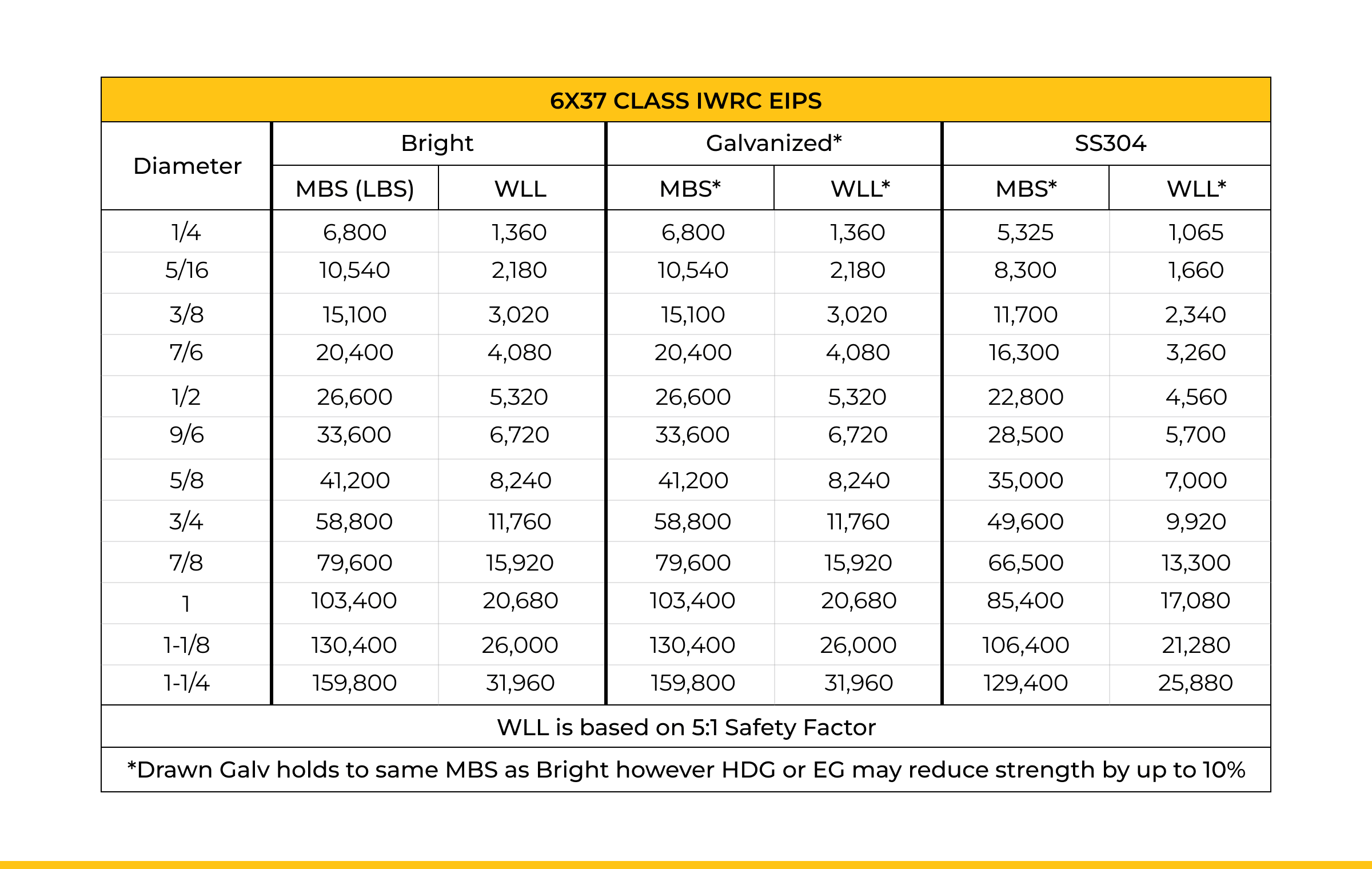
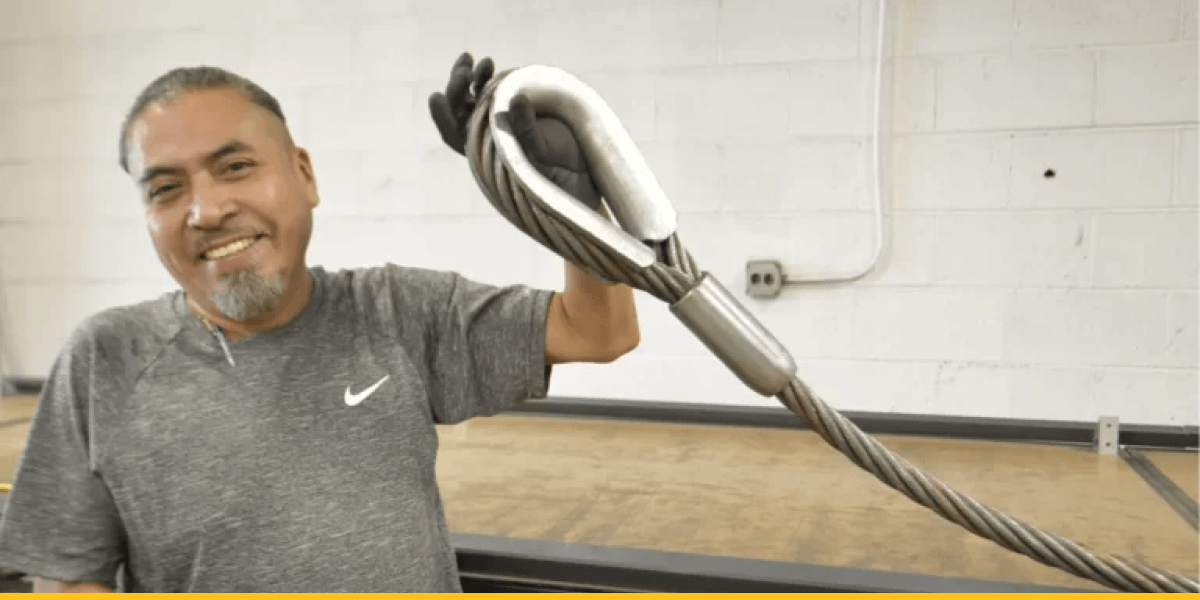
Fittings/Hardware For Towing Cable Applications
- Thimble Loops
Tow cables often utilize a turnback loop structure (i.e. hourglass/duplex sleeves) or a Flemish Splice loop. A thimble loop reinforces this eye and protects it from wear at the attachment point. By distributing stress more evenly, it preserves the rope’s shape and extends its service life. It is especially valuable in high-stress towing applications or setups where the cable connects to sharp or abrasive anchor points.
- Eye Hoist Hooks
Eye hoist hooks provide a secure and heavy-duty connection between the cable and the load. Their design allows quick engagement and disengagement, which is crucial for towing heavy equipment, trailers, or military vehicles where operational efficiency and safety are priorities.
- Swivel Eye Hooks
Swivel eye hooks rotate under load, preventing the cable from twisting or binding during towing. This feature is especially important in dynamic towing scenarios where the load may shift or rotate, reducing strain on both the cable and vehicle while improving ease of handling.

Selection Criteria for Towing Cable Assemblies
Here are several key elements to consider when designing the appropriate cable for towing assemblies:
- Strength (Working Load Limit & Minimum Breaking Force):
Select a cable rated well above your maximum towing load. The working load limit (WLL) ensures day-to-day safety, while the minimum breaking force provides a safety margin for emergencies. For example, towing heavy equipment may require a cable rated 5–6 times the expected load. - Wear and Abrasion Resistance:
Towing cables often drag across trailer edges or contact dirt and metal surfaces. Choose constructions (e.g., 6×37 IWRC, 6×19 IWRC, and 7×19 ) and coatings (e.g., galvanized or PVC) that protect against friction and extend service life. - Flexibility:
The cable must handle frequent bending without kinking, especially when wrapping around winches or pulleys. 7×19 construction is particularly flexible for applications requiring tight turns or frequent spooling. - Corrosion Resistance:
Outdoor towing exposes cables to rain, snow, and road salt. Galvanized finishes or PVC coatings resist rust, protecting both cable integrity and operator safety over time. - Fatigue Resistance:
Repeated tensioning and release can cause internal wire fatigue. Pre-stretched cables and IWRC construction help maintain length consistency and reduce the risk of failure during long-term use. - Diameter and Construction Choice:
Match cable construction to the application for a balance between flexibility and strength. 6×37 IWRC, 6×19 IWRC, and 7×19 constructions all offer unique diameter and construction benefits for towing applications. - Traceability and Certification:
Ensure every assembly includes identifying tags or stamped fittings to verify specifications and safety ratings, especially critical in regulated industries like military or DOT applications.
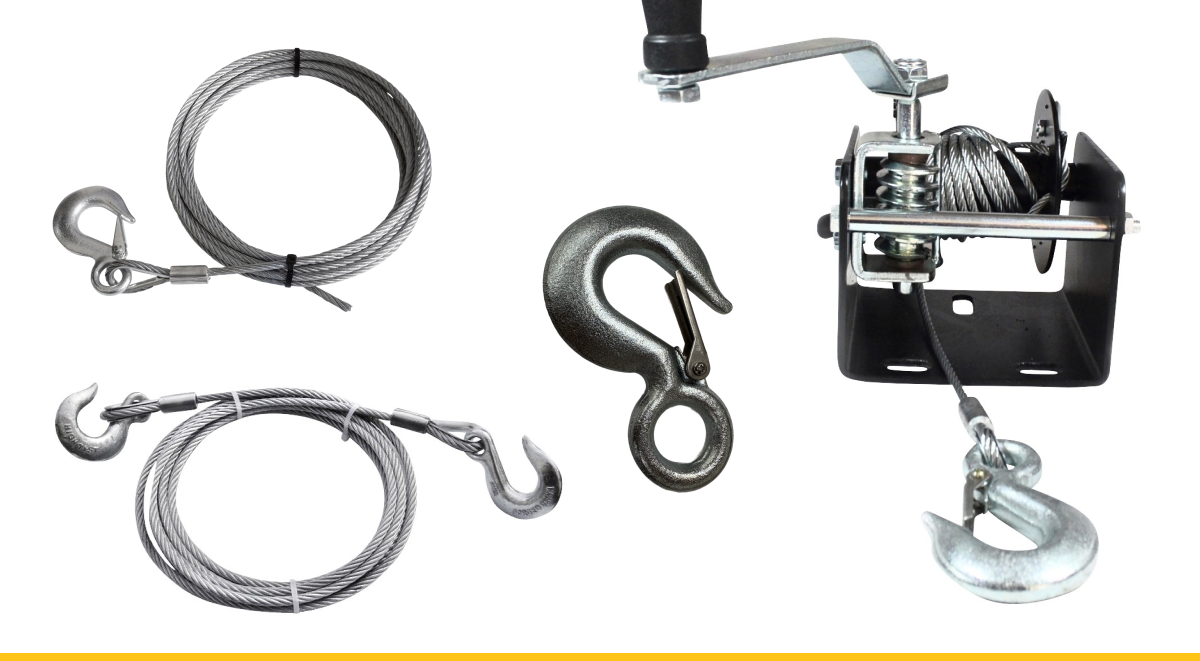
Common Applications for Towing Assemblies
Cables for towing can be used for a much wider range of applications than basic towing and winching. The following are a few of the most common applications for towing cable assemblies and the most common cables used in each application.
Harvesting Equipment
Farmers regularly use cables for towing harvesting equipment behind a tractor. They can withstand constant high stress in tough situations. These are often heavy-duty thimble loop assemblies, typically 1-1/4” in diameter, IWRC EIPS Bright 6×37 class (6×36) wire rope.
Military Tanks
The military regularly uses heavy-duty tow cable assemblies for pulling tanks along roads to save fuel and for pulling stuck tanks out of the mud (tanks are heavy, so they regularly sink into the ground and get stuck).
The heavy-duty hooks on the ends of a cable for towing often require proof-loading to fit them correctly while maintaining length. They are typically 1-1/8” to 1-1/4” in diameter, with swageless eyes painted tan or green for camouflage.

Lexco Cable’s Expertise
Choosing the right towing cable assembly involves matching construction, hardware, and protective features to your specific load, environment, and safety requirements. By considering factors like flexibility, abrasion resistance, and certification standards, you can ensure your towing setup performs reliably under real-world conditions.
Lexco® Cable designs and manufactures assemblies with these factors in mind, offering solutions that meet demanding applications from agriculture to military recovery. Whether you need a standard configuration or a custom-engineered assembly, our team can help you identify the best fit for your towing needs.
Contact Lexco Cable today for more information about towing cable assemblies.
